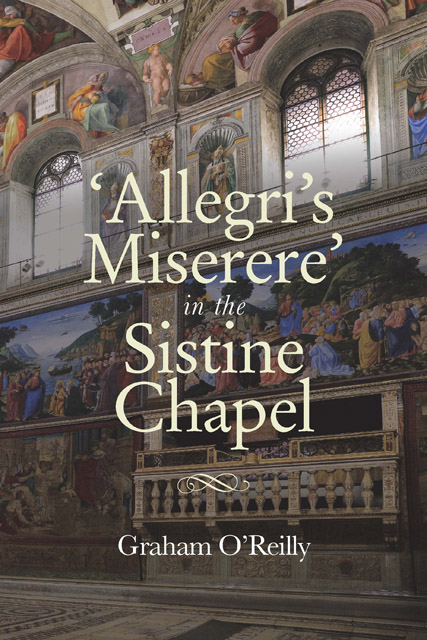Book contents
- Frontmatter
- Contents
- List of illustrations
- List of tables
- List of music examples
- Acknowledgments
- Note on the text
- Introduction: myth and reality
- Part One The Sixteenth and Seventeenth Centuries
- Part Two The Eighteenth Century
- Part Three The Nineteenth Century
- Part Four Performing the Miserere in the Twentieth Century
- Part Five Appendices, Editions and Notes
- List of appendices
- Bibliography
- Index
8 - The Papal Choir in the nineteenth century 1 – Giuseppe Baini
Published online by Cambridge University Press: 13 January 2023
- Frontmatter
- Contents
- List of illustrations
- List of tables
- List of music examples
- Acknowledgments
- Note on the text
- Introduction: myth and reality
- Part One The Sixteenth and Seventeenth Centuries
- Part Two The Eighteenth Century
- Part Three The Nineteenth Century
- Part Four Performing the Miserere in the Twentieth Century
- Part Five Appendices, Editions and Notes
- List of appendices
- Bibliography
- Index
Summary
When peace returned to Europe after the final defeat of Napoleon in 1815, the phenomenon of the Grand Tour resumed with renewed vigour and enthusiasm. Rome, a cradle of European civilisation, was an obligatory stop and, seeking to combine the exoticism of ancient ruins with that of Catholic ritual, Holy Week in the Vatican was a favourite rendezvous. The ‘Allegri Miserere’, sung by the Papal Choir in the Sistine Chapel, was once again the focus of all music-lovers and culture hunters. Its evolution through the century, like that of the choir, revolved around two very large personalities, Giuseppe Baini and Domenico Mustafà.
Baini’s life and career
Giuseppe Baini (1775–1844) was admitted into the Papal Choir in 1795, having been noticed by some of the Papal singers when he joined in with them during a visit of the Pope to the Collegio Inglese for the feast of St Thomas of Canterbury the previous year. During his early years he received special dispensation to continue his training in the seminary of the Collegio Romano while singing in the choir. He had to teach himself to read music, having been allowed to study only solmisation and Gregorian chant in the seminary, and he received singing lessons from Saverio Bianchini, one of the basses of the Chapel. His first composition teacher was his uncle Lorenzo, maestro at various churches in Rome and Venice, and later at the cathedrals of Terni and Rieti, but his true master was Giuseppe Jannaconi, who from 1802 instructed him in his preferred subject, stile antico Palestrinian counterpoint.
Soon after the French invaded Rome in February 1798, Baini left for Sant’Elena, near Perugia, where he stayed until they were driven out in November of the following year. Of a serious disposition, he distinguished himself immediately upon his return by persuading the other members of the choir, which had been disbanded since the invasion, to reunite and sing the traditional Missa de Spiritu Santo regularly during the long conclave to elect the successor to Pius VI, who had died in August 1799.
The choir was reconstituted after the new Pope, Pius VII, was finally allowed to enter Rome on 3 July 1801. Once again Baini took the initiative.
- Type
- Chapter
- Information
- Allegri's Miserere in the Sistine Chapel , pp. 121 - 134Publisher: Boydell & BrewerPrint publication year: 2020



